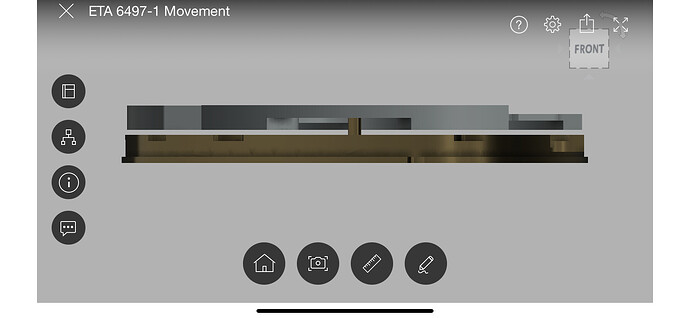I am trying to use a .4mm slitting saw cuting a 40mm bar of brass. I am making watch plates so I like to do all the drilling for the upper and lower plates at once and then cut the part in half. I do this because the alignment is absolutely critical +/- .02mm . Problem is my saw is cutting a cone. I am cutting at 2000rpm blade is 124 tooth 43mm diameter saw. Feed is 115mm a minute with a .5mm step over so it is already taking all day to make this cut. I have lots of other slitting saw cuts to make so any advice will help. I have looked online but it’s all about big slitting saws.
In my experience slitting saws should be run at an RPM where you can actually hear each tooth cut. It might sound ridiculous but if it is making a whirring sound instead of a chipping sound you are running it too fast.
My only question now is, how fast can you hear ![]()
I tried it with a .8mm saw and it was ez mode.
Err on the side of caution. RPM formula = Cutting speed X 4 divided the diameter of the tool. The disc is probably high speed steel. if the disc is 2 inches in diameter and cutting speed of brass is 200 sfpm. 200x4 divided by 2 will equal 400 rpm. If that is under perfect cutting conditions ,and your conditions are not perfect, set that as you maximum rpm for now. The cutting speed for brass is .002 to .012 ipr. .006 X 400 is F2.4. Make that your maximum feed for now. The formula for sfm is .262 x rpm x diameter. when you finally get a non tapered cut determine the sfm that worked. If it is 600 rpm at an f2. then the cutting speed for brass on your machine with that slitting saw is 314 sfpm at an f2. Machining is a lot of trial and error. when you get it right remember what it sounded like. next time you can manipulate your overrides to get the sound you know works instead of doing alot of calculations. These are imperial numbers and I do apologize because I don not work in a metric world. you can covert or just look up the formulas for RPM and SFM that are used in the metric world. Slower is better at first. Slitting saws do not play around. They shatter quite dramatically when they are pushed too hard.
Does it cut a cone as though the piece were rotated and the saw blade tilted, as in the cut is only a saw kerf wide, or is there more material removed than a kerf worth?
If all axes are orthogonal, play in the spindle bearings or ways can do it, and also if the teeth are slightly sharper on one side than the other.
Running the saw over the cut and looking very closely might be interesting.
I accidentally dug one side of a chainsaw into the dirt making a low cut, just a little bit, and the effect of the difference in sharpness was surprising, was impossible to make a straight cut.
way more than a kerf worth. it was basically bending the saw at 10-20 drgrees down. the sliding saw I was using had a bevel on one side of the blade. that’s probably what did it. but why bilevel a saw blade?\
